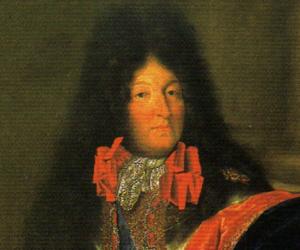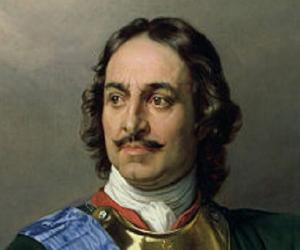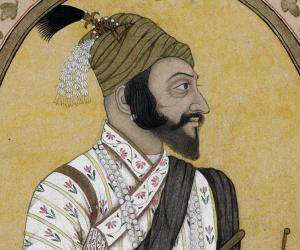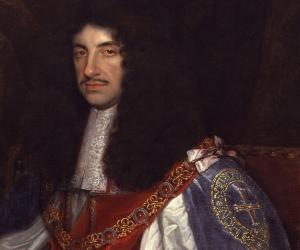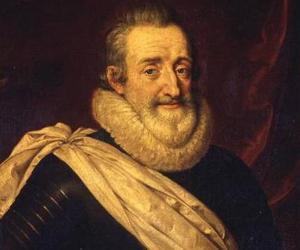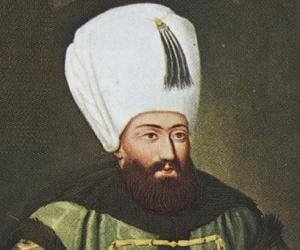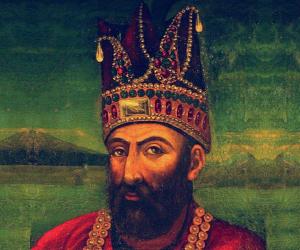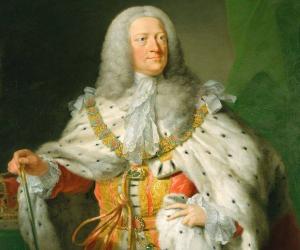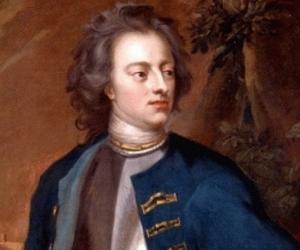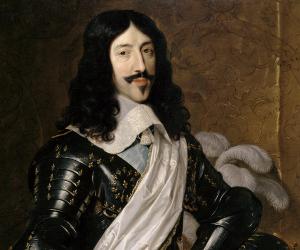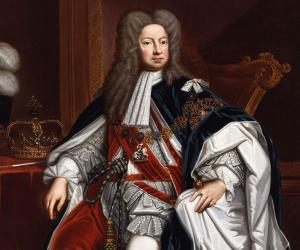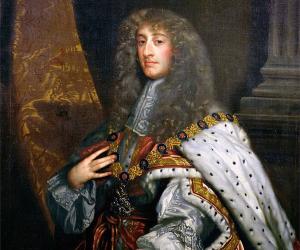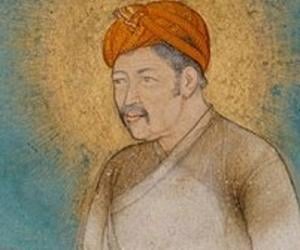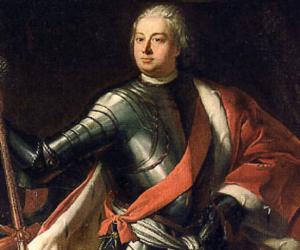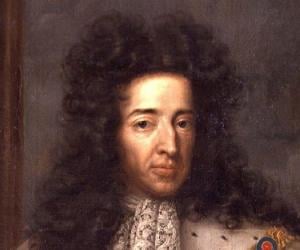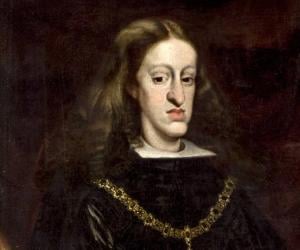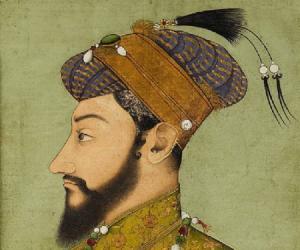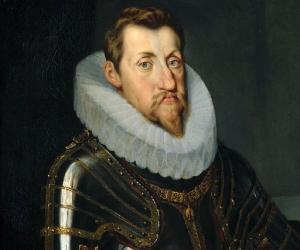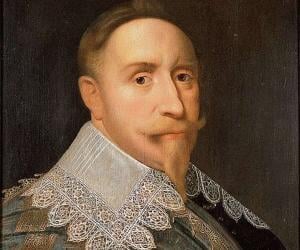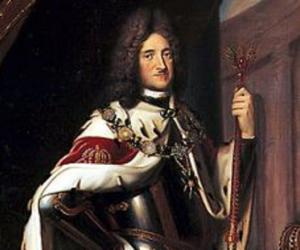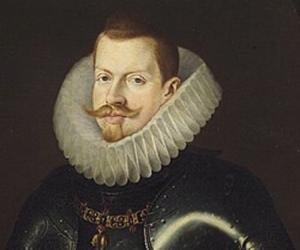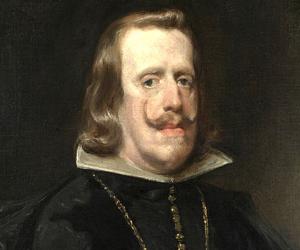Louis XIV of France reigned as the King of France from 1643 to 1715. Louis XIV is the longest-reigning monarch of a sovereign country in the history of Europe. Under his rule, France often asserted its military prowess and emerged as the most dominant European monarchy. His life inspired several films, such as The Taking of Power by Louis XIV.
Shivaji was an Indian warrior-king. He is credited with founding the Maratha Empire, which became a force to reckon with during the 18th century. He is also credited with creating his own navy. Considered one of the most important Indian kings and a hero of the Hindus, Shivaji's life and work have inspired several works of art, including films.
Henry IV of France reigned as the King of France from 2 August 1589 until his death on 14 May 1610. Remembered for his concern about the welfare of the people of France, Henry worked to eliminate corruption, promote agriculture, encourage education, and regularize state finance. The character of Ferdinand in Shakespeare's Love's Labour's Lost was loosely based on Henry.
Nader Shah reigned over Iran as the Shah of Iran from 1736 until his death in 1747. He is widely regarded as one of the most powerful rulers in the history of Iran. He has also been described as the Napoleon of Persia, thanks to his military genius, which was evident in his several campaigns.
Louis XIII of France reigned as the King of France between 1610 and 1643. He is best remembered for saving the kingdom from the mismanagement of his mother Marie de' Medici, who was exiled by a 16-year-old Louis XIII. He is also credited with popularizing wigs among men, which had not been fashionable since antiquity.
James II of England reigned as the king of Ireland, Scotland, and England from 1685 to 1688. His deposition as king, caused by the Glorious Revolution of 1688, ended a century of civil and political strife by establishing the principle that Parliament would be preferred over the Crown as opposed to the principles of divine right of kings and absolutism.
Charles I, the King of England, Scotland and Ireland from 1625 to 1649, was said to be authoritarian and was in constant battle with the Parliament over the issue of royal prerogative. The friction led to a civil war from 1642 to 1645 between him and the English and Scottish Parliaments. He was defeated and executed in 1649 for treason.
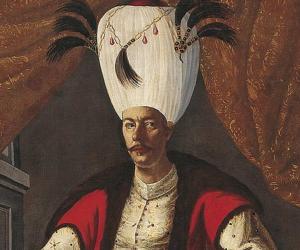
Mehmed IV reigned as the Sultan of the Ottoman Empire from 8 August 1648 to 8 November 1687. After ascending the throne at age six following the dethronement of his father in a coup, Mehmed IV went on to become the second-longest reigning emperor in the history of the Ottoman Empire after Suleiman the Magnificent.
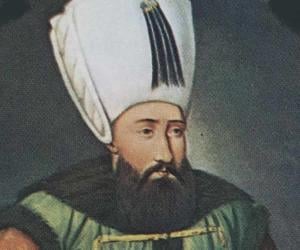

The Maratha Empire’s second Chhatrapati, Sambhaji Bhosale, was the eldest son of Shivaji. After losing his mother at 2, he was raised by his grandmother. A treaty made him a Mughal mansabdar. Later, following repeated clashes with the Mughals, he was eventually captured and tortured to death.
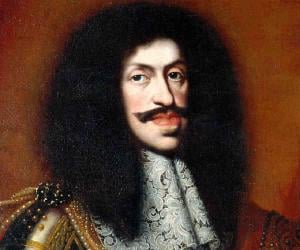
Second son of Emperor Ferdinand III, Leopold I became the heir apparent to his father’s throne on the death of his elder brother in 1654, being coroneted as the Holy Roman Emperor in 1658. Although he received little training for the throne, Austria became a great European power during his reign, emerging victorious in struggles against Ottoman Empire and France.
Akbar, the third Mughal emperor, played an important role in inculcating Persian culture into the Indian subcontinent. Akbar is considered one of the most important rulers of the Mughal Empire, an empire that seeped foreign ideas and culture into medieval India, the effects of which are still visible in modern-day India, especially in the northern parts of the country.
The Soldier King Frederick William I of Prussia is remembered for transforming his nation into a prosperous state. He was known for his simple lifestyle, as opposed to his father’s kingly excesses. His experience at the War of the Spanish Succession led him to strengthen Prussia militarily, too.
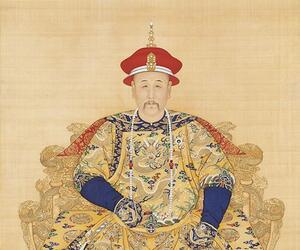
Yongzheng reigned over the Qing dynasty as its fourth Emperor from 1722 to 1735. He was also the third Qing emperor to reign over the Eighteen Provinces. Remembered for his hard-working nature, Yongzheng's most prominent objective was to come up with an effective government at minimum expense. Yongzheng, who cracked down on corruption, is credited with forming the Grand Council.
Charles II of Spain reigned as the king of Spain from 1665 to 1700. He was the last king from the House of Habsburg to rule the Spanish Empire. Despite suffering from many illnesses throughout his life, Charles proved to be a reasonably influential king. The town of Charleroi and the Caroline Islands in modern Belgium were named after Charles.
Aurangzeb reigned over most part of the Indian subcontinent for 49 years as the sixth Mughal emperor. He helped the Mughal Empire reach its greatest extent and helped India become the biggest manufacturing power and the world's largest economy. He was known for his religious piety and led a very simple life..
Ferdinand II was the Holy Roman Emperor from 1619 to1637. He was a member of the House of Habsburg and the son of Archduke Charles II of Inner Austria and Maria of Bavaria. A zealous Catholic, he wanted to restore the Catholic Church as the only religion in the empire, a move that earned him the ire of Protestant groups.
Gustavus Adolphus of Sweden reigned as the King of Sweden from 30 October 1611 until his death on 6 November 1632, at the age of 37. He is credited with transforming Sweden into a great European power. Considered one of the greatest modern military commanders, Gustavus Adolphus turned Sweden into one of Europe's primary military forces during the Thirty Years' War.
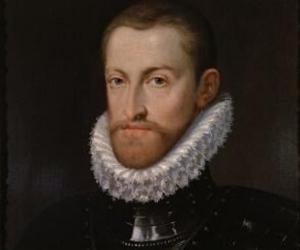
Rudolf II, Holy Roman Emperor reigned as the King of the Romans and as the King in Germany between 1576 and 1612. Best remembered as an intellectual aficionado of occult arts, Rudolf is often seen as the founding father of the Scientific Revolution. He devoted his time to astrology and alchemy in an attempt to find the Philosopher's Stone.
Frederick I of Prussia reigned as the King of Prussia from 1701 until his death in 1713. He crowned himself in 1701 in Königsberg and proclaimed himself King in Prussia. A patron of learning and arts, Frederick I is credited with founding the Academy of Arts in 1696 as well as the Academy of Sciences in 1700.
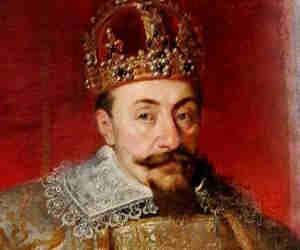
Sigismund III Vasa was the elder son of Swedish king John III Vasa. As the king of Poland and Sweden, he not only enjoyed prosperity but also tried to unite the two states, although he ended up creating conflicts between them. His lust for power also resulted in the Zebrzydowski Rebellion.
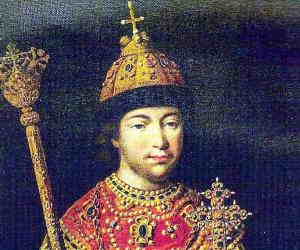
Philip III of Spain was the king of Spain from 1598 to 1621. He also reigned over Portugal, Naples, Sicily, and Sardinia as Philip II. He was the son of Philip II of Spain and Anna of Austria. He was believed to be a weak man, who relied too much on his corrupt chief minister, the Duke of Lerma.
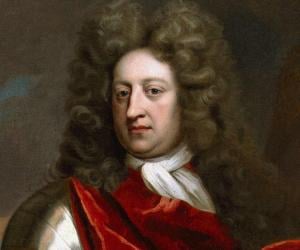
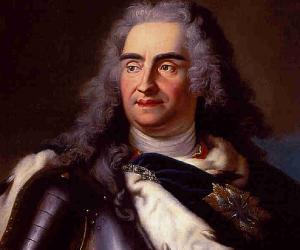
Philip IV of Spain was the king of Spain from 1621 to 1665 and the king of Portugal from 1621 to 1640. He was a fine horseman and a keen hunter but was considered a weak ruler with excessive dependence on the ministers. Even though the Spanish empire expanded considerably during his reign, he was not a popular king.
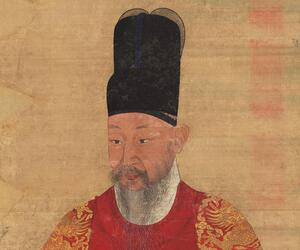
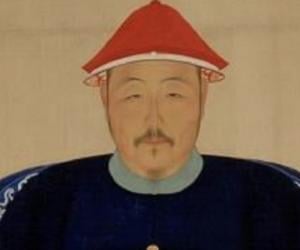
Hong Taiji reigned as the khan of the Later Jin from 1626 to 1636. He is credited with establishing the Qing dynasty and reigned as its emperor from 1636 to 1643. He also played a major role in consolidating the empire founded by his father Nurhaci. Over the years, Hong Taiji has been portrayed in many TV series and films.
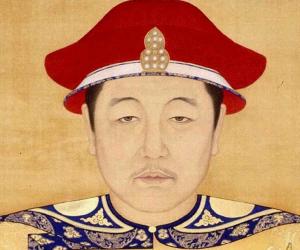
Shunzhi Emperor of the Qing Dynasty was the first Qing ruler of China proper. Shunzhi relied on Buddhist priests and eunuch officials. While some believe he had died of smallpox, others state he had retired to a monastery to cope with the death of his favorite consort.
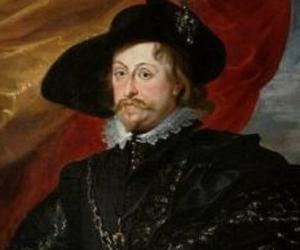
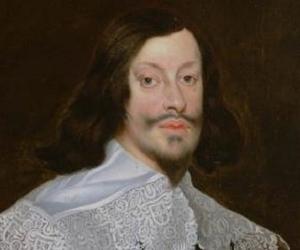
Holy Roman Emperor Ferdinand III is largely held responsible for ending the Thirty Years’ War in 1648 with 2 peace treaties known as the Peace of Westphalia. He also conspired against Generalissimo Albrecht von Wallenstein when he was denied control of the imperial army. He was also instrumental in the Peace of Prague.
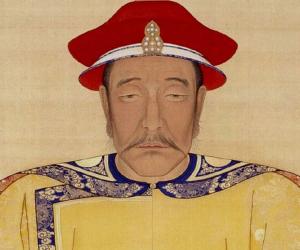
Nurhaci was a Jurchen chieftain who reigned as the Khan of Later Jin for 10 years. He is credited with uniting and reorganizing several Jurchen tribes. His attack and conquest of Ming dynasty laid the foundation for the formation of the Qing dynasty, which was founded by his descendants in 1636. His life inspired the 2005 TV series, Taizu Mishi.
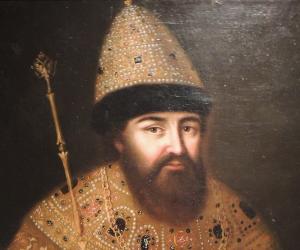
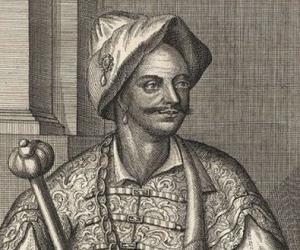
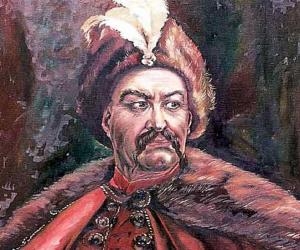
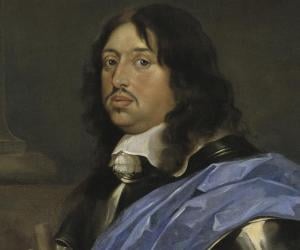
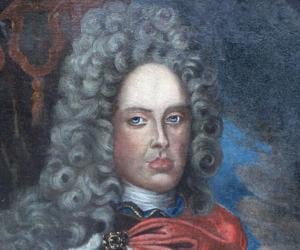
Emperor Leopold I’s eldest son, Joseph I became the king of Hungary at the tender age of 9 and the king of Romans at 11. Though he strengthened Austria’s financial situation, bringing the Viennese city bank under the state, he failed to retain the Spanish crown for the Habsburg Monarchy.
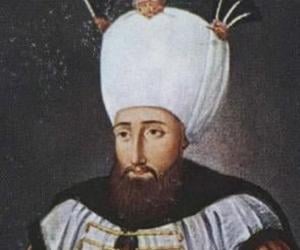
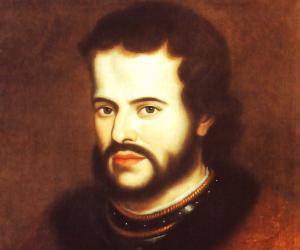
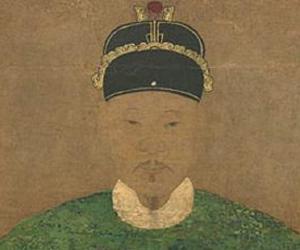
Koxinga was a Ming loyalist who opposed and resisted the Manchu invasion of China. In 1661, he established the House of Koxinga after defeating the Dutch military camp in Taiwan. He then ruled the Kingdom of Tungning from 1661 to 1662. Today, Koxinga is considered a deity in coastal China and is worshiped in places like Taiwan and Southeast Asia.
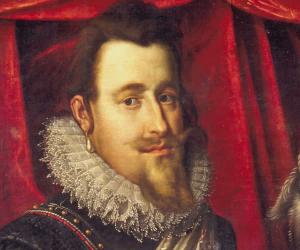
Christian IV was the king of Denmark and Norway in the late 16th and early 17th centuries. Ambitious as a ruler, he involved Denmark in many wars, including 2 failed campaigns against Sweden and the Thirty Years’ War, which proved to be a disaster for his kingdom’s economy.
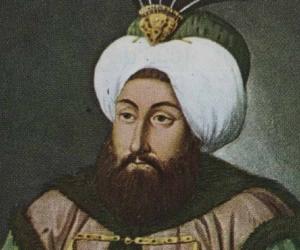
The 21st sultan of the Ottoman Empire, Ahmed II reigned in the 17th century. He spent most of his reign in campaigns against the Holy League of Austria, Venice, and Poland. He faced significant Arab unrest and encouraged settlements of nomadic Turkmen tribes. He was also mostly dominated by his courtiers.
